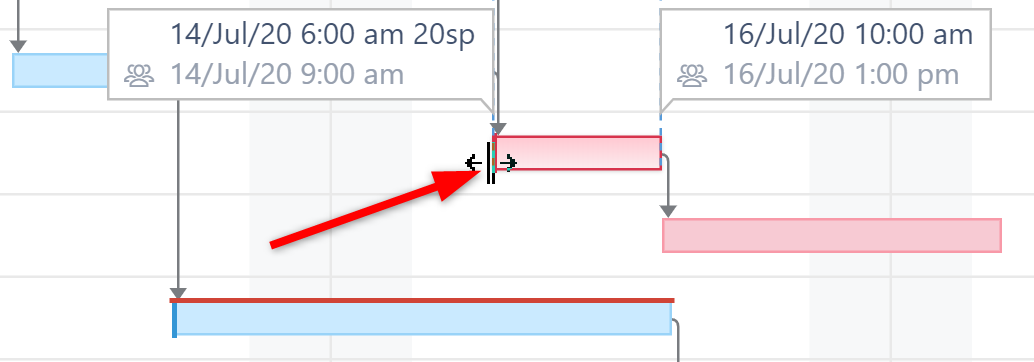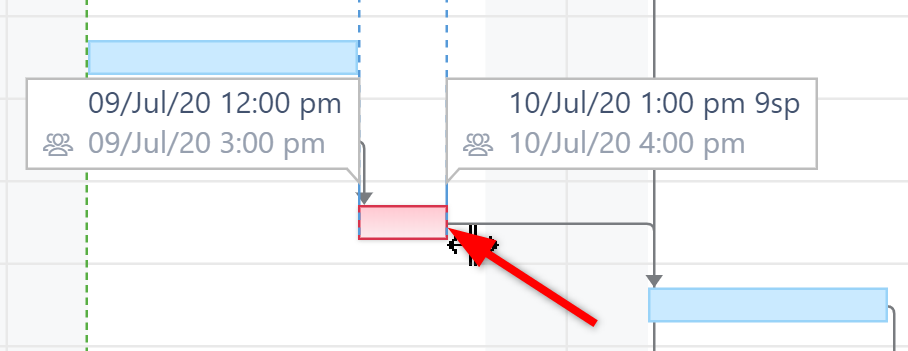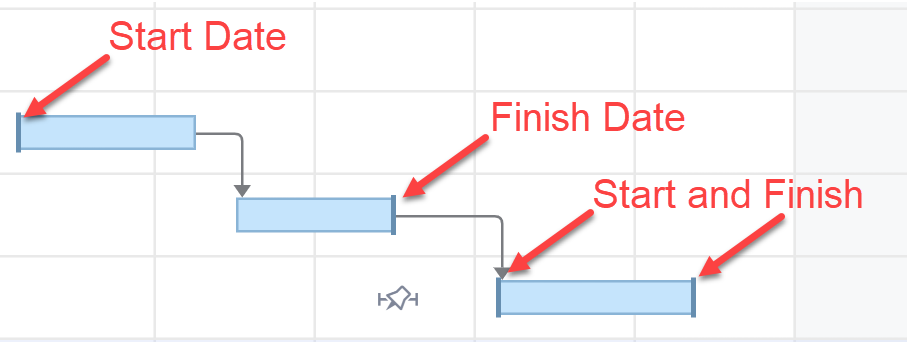Manual scheduling allows you to manually enter or update a task's Start and/or Finish dates instead of having these automatically scheduled.
This can be useful if:
-
You have previously established start dates and/or finish dates for tasks
-
You need to push back a start date due to resource limitations or budgeting work items
-
You need to set strict finish dates because of an impending deadline
-
You want to experiment with different timelines by prioritizing or delaying certain tasks
-
You do the majority of your work in sprints: see Planning with Sprints
Enabling Manual Scheduling
When you first create a Gantt chart, automatic scheduling is enabled by default. You can switch to manual scheduling in one of the following ways:
-
Manually schedule all tasks - open Settings | Scheduling, scroll to Manual Scheduling, and check Allow manual scheduling. See Manual Scheduling Configuration to learn how to customize scheduling for your projects.
-
Manually schedule a single task - click on the task to open its Task Details panel and switch the Mode to Manual
-
Manually schedule select tasks - create a slice for the tasks, add a Manual Scheduling setting, and check Allow manual scheduling.
Manually Adjusting Start and Finish Dates
Once you have enabled manual scheduling, you can quickly adjust a task's schedule by:
-
Dragging its task bar in the Gantt chart - note, this will have different results depending on how you drag the bar (see below)
-
Editing the values in the Task Details Panel
-
Updating the custom Start Date and Finish Date fields in Jira or Structure
Dragging the Entire Task Bar
When you drag the entire task bar:
-
If both the Start and Finish dates are already manually scheduled, both fields will be updated
-
If only the Start Date is manually scheduled, the Start Date will be updated, and the Finish Date will continue to be automatically updated based on task estimates and dependency types
-
If only the Finish Date is manually scheduled, the Finish Date will be updated, and the Start Date will continue to be automatically scheduled based on task estimates, predecessors, and dependency types

Dragging the Start
To adjust a task's Start Date (without changing the Finish Date), drag the left side of the bar to the desired date/time. Since the Finish Date remains unchanged, this process also updates the task's Original Estimate (if the task hasn't been started) or Remaining Estimate (if the task is in progress).

Dragging the Finish
Dragging the right side of the task bar works a little differently, depending on whether or not there's an existing value in the Finish Date field:
-
If the Finish Date is already manually scheduled, the finish date and Original Estimate/Remaining Estimate will be updated. The Start Date will remain unchanged.
-
If the Finish Date is not currently manually scheduled, only the Original Estimate/Remaining Estimate will be changed. The Start and Finish dates will remain unchanged.

Identifying Manually Scheduled Start and Finish Dates
When a task is manually scheduled, Gantt will place a visual indicator (dark, vertical line) at the corresponding end of the task bar:
-
A dark line on the left means the task is manually scheduled by its Start Date
-
A dark line on the right means the task is manually scheduled by its Finish Date
-
A dark line on both sides means the task is manually scheduled by its Start and Finish dates, so it has a fixed duration

Manual Scheduling Rules
Manual Scheduling uses the following rules:
-
If neither Start nor Finish dates are defined, the task is scheduled automatically to start either on the Project Start Day or based on the task's dependencies. For example, in the case of a Finish to Start dependency, the task will be scheduled to start immediately following the Finish Date for the task it depends on. (Note: If Use sprints for manual scheduling is selected and the task is assigned to a sprint, the task will be scheduled based on its sprints.)
-
If you move a task in the chart, its Start Date value will be set accordingly, and the task will be considered scheduled manually. If the Finish Date is not set manually, it will be calculated based on the task's Start Date and work estimate.
-
If you set the Finish Date manually, the Start Date will be calculated based on the Finish Date and work estimate. If you then move the task, the Finish Date will be adjusted accordingly.
-
If you set both Start and Finish dates for your task, it will have a Fixed Duration, and its work estimate will be divided evenly between the Start and Finish dates. Moving the task bar in the chart will change both the Start and Finish dates accordingly, without affecting the work estimate.
When you set the Start Date or Finish Date, or use sprint-based scheduling, the task is considered to be scheduled manually. This means it will stay at the defined position regardless of its dependencies.
To switch back to the Automatic Scheduling mode, click the task to see the Task Details panel and toggle the Scheduling option to Auto. Your Start/Finish dates will remain in Jira, but they will not be used for scheduling purposes. Instead, the task will be placed after its dependencies or, if no dependencies exist, the Gantt Start Date will be set to the Project Start Day. You can also turn off manual scheduling for a task by removing the Start/Finish dates from the corresponding Jira fields.
